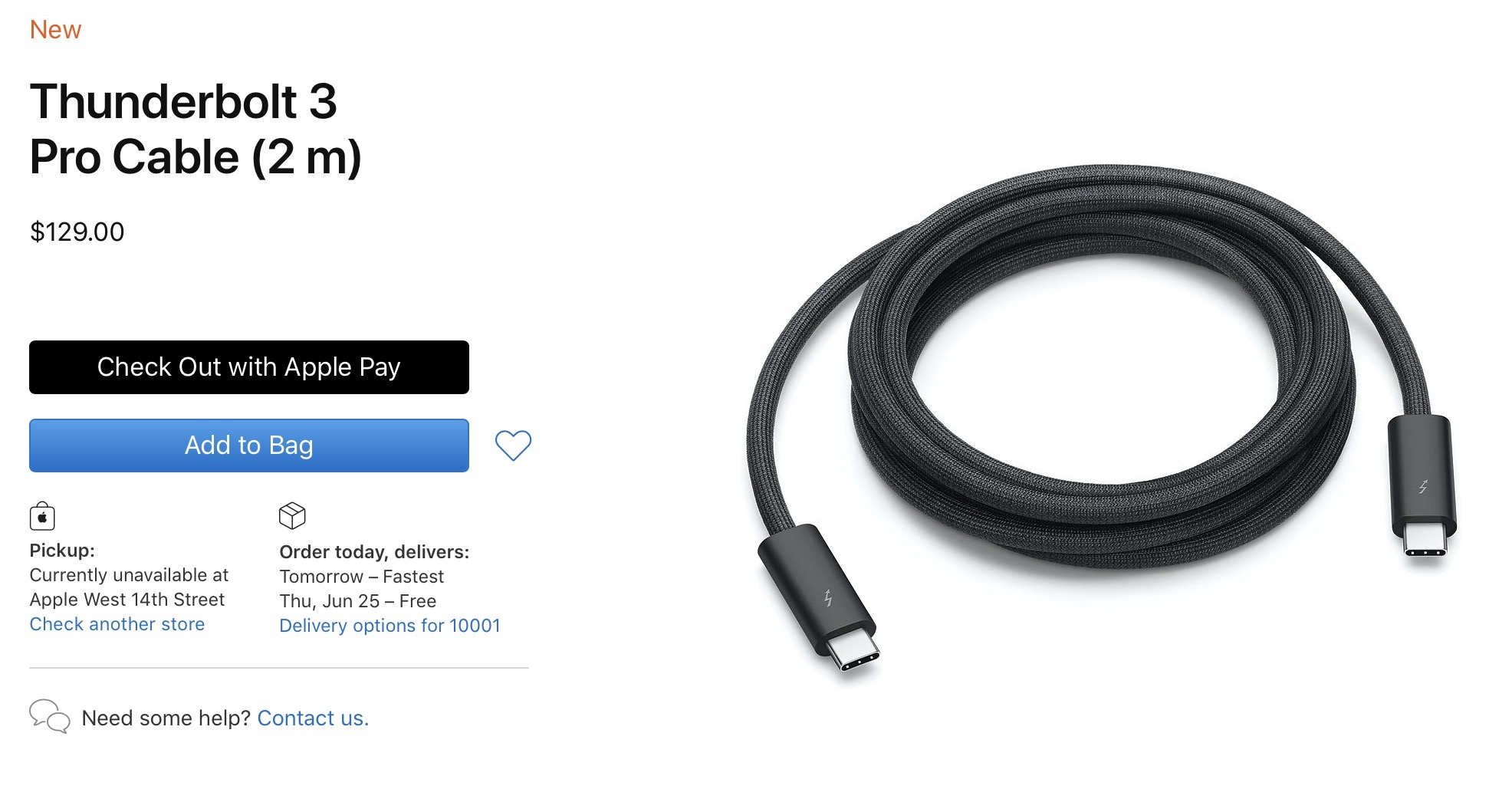Passive Thunderbolt 3 cables like Apple's standard version are limited to shorter lengths of less than a meter, as they are unable to maintain maximum speeds over longer lengths. Active electronics in the cable connectors are required for longer-length cables, which adds significantly to the cost. Even so, Apple's Thunderbolt 3 Pro Cable carries a price premium over many other active cables, including an $80 Belkin one also carried by Apple.
The Belkin cable doesn’t support USB 3.0, though (just USB 2.0 or Thunderbolt). If the Apple cable does, then it has more functionality.
[automerge]1592933333[/automerge]
The Belkin cable cannot send a USB 3.0 signal when connected to an ordinary USB-C port. The Apple cable does. It can also send DisplayPort over USB-C.It’s overpriced, but it’s not as overpriced as I thought. Although you can get the same thing on Amazon for $60-$75.
[automerge]1592913587[/automerge]
Can you explain? On the surface it advertises the exact same data transfer speeds.
Last edited:








